The Opening of the Fair,
and the Show that everyone saw!

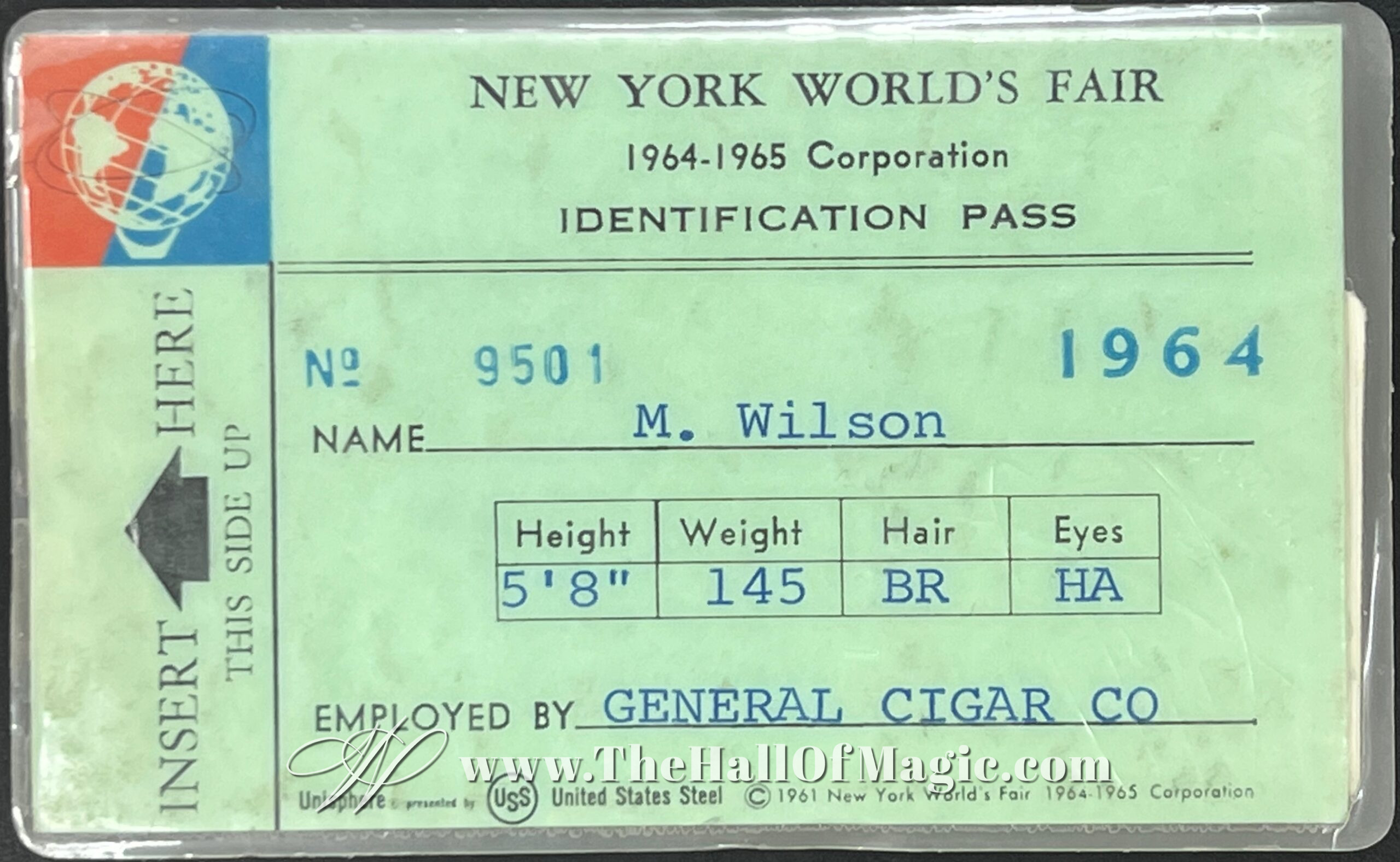
Mark Wilson's ID PASS 1964 Front
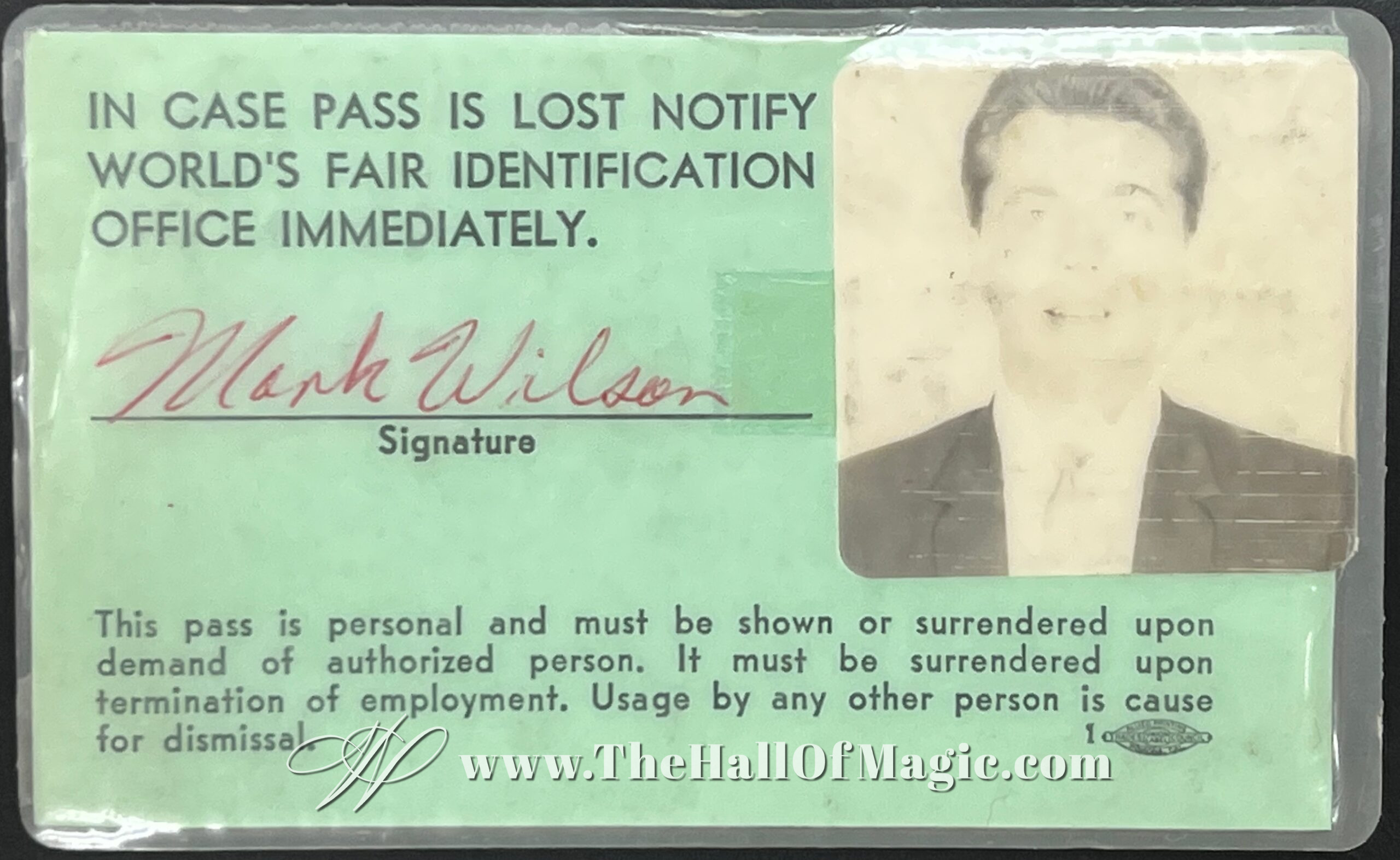
Mark Wilson's ID PASS 1964 Back

Prints of this photo are still available! Please click on the button to get YOURS!
The fair opened on April 22,1964, and that evening a television special featured a preview of what visitors might expect. There were hundreds of exhibits to preview, but one quick scene from the General Cigar display showed Mark Wilson passing a hoop over a levitated Carol Channing.
While the fair opened in April, my dad’s vacation wasn’t until August, so that’s when I finally got to go. Having only been to amusements parks, I was amazed that once past the admission gate most of the larger attractions were free. I specifically remember my mom explaining that “the best things in life were free.” The same phrase was also used in Time magazine’s review of the fair.
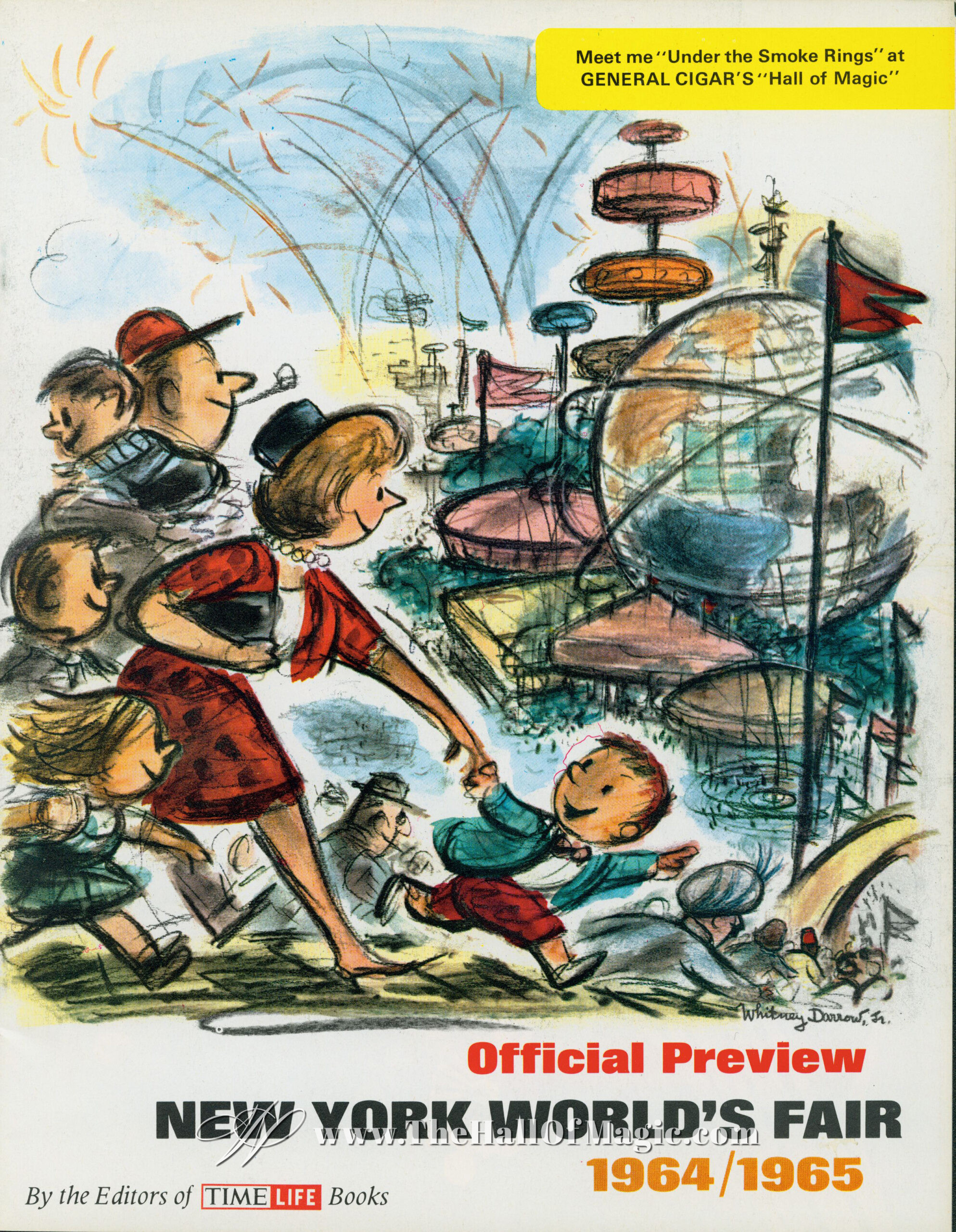
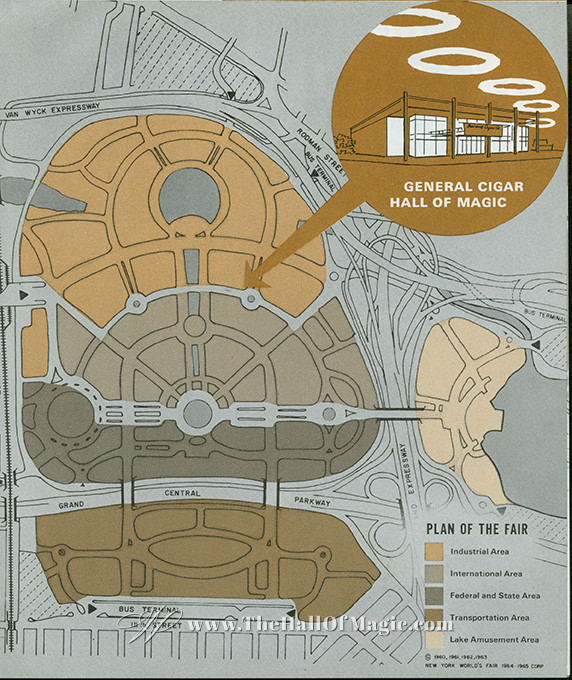
The General Cigar exhibit combined a theater and a lobby area. The lobby area included a display of the company’s products and other interesting things to look at. These included a short sports film by Sports Illustrated and one very interesting illusion.

Hand Machine Proof Sheet Images, Photos by Irving Desfor
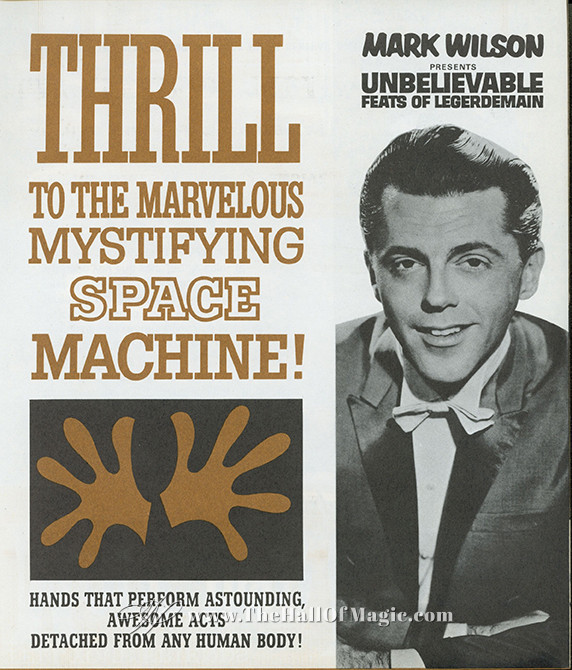
Every ten minutes, a “Magic Hands” machine went into operation. This was a mechanical-looking device in which two hands, detached from any human body, performed and delivered a sales pitch. It never failed to attract a crowd.
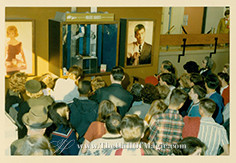
Hand Machine and crowd, Photo by Irving Desfor
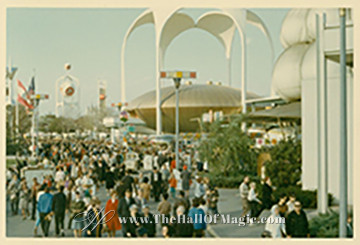
Johnson's Wax Building next to the Hall of Magic (right corner), Photo by Irving Desfor
The line to see the illusion show inside the Hall of Magic formed outside. Not all the exhibits had lines, just the ones you wanted to see.
While I was waiting to enter the Hall of Magic, the smoke ring machine was turned on. After a few minutes and a very load thump, a large smoke ring, eight feet in diameter, rose from the machine. For some reason, the machine was then turned off. As the line to enter got closer to the machine, I was able to read a sign stating that it was too windy today to make smoke rings. In fact, it was too windy more days than it wasn’t, but there was another problem. This machine was just outside the theater, and the loud thumping noise could easily be heard and felt inside, which certainly disrupted the show. So, between the wind and the noise, it was hardly used. But sure looked great on paper.
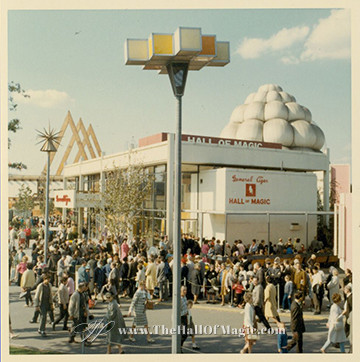
Hall of Magic, Photo by Irving Desfor
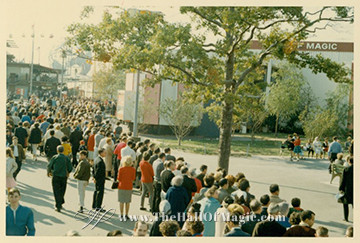
Line outside Hall of Magic, and Smoke Ring Machine, Photo by Irving Desfor
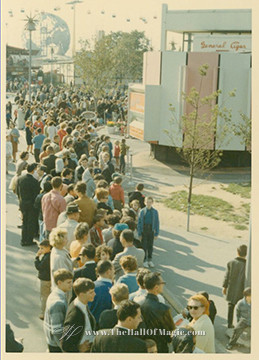
Line by Smoke Ring Machine, with Unisphere, Photo by Irving Desfor
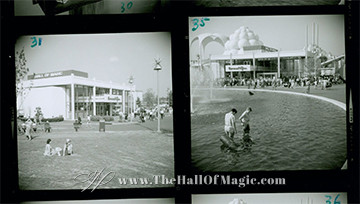
Hall of Magic Candid Shots Proof Sheet, Photos by Irving Desfor
The wait was less than an hour, and as we finally neared the open doors, the sound of calliope music could be heard. In we filed.
The theater capacity was 299 people and the first and only disappointment was the fact that it didn’t seat anyone. It was a stand-up theater. According to Mark Wilson, the stand-up arrangement was decided upon because it allowed more people to see each performance.
Once the theater was filled, the lights went down and the calliope music ended. Orchestra music began playing and, after a dramatic timpani roll, Mark Wilson’s voice welcomed you to the Hall of Magic.
Although the show was live, both the music and Mark’s voice were on tape.
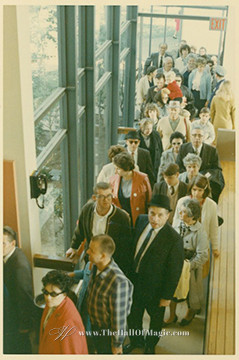
Line for show inside Hall of Magic, Photo by Irving Desfor
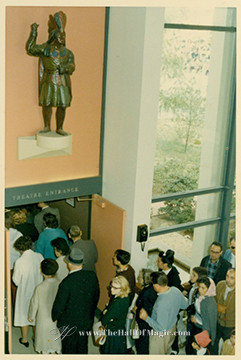
Theater Entrance inside Hall of Magic, Photo by Irving Desfor
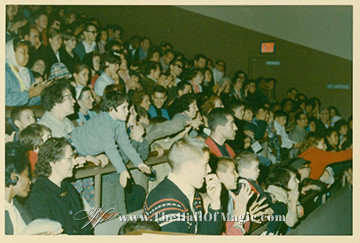
Audience watching show inside Hall of Magic Theater, Photo by Irving Desfor
For many, this was the first time they’d seen a magic show used to sell a product. Although the principle reason for the magic was to sell cigars, the advertising was skillfully blended in and never over powered the effects.
The show opened with a wooden Indian being transformed into the performer, who would continue the show. Mark was not one of the regular performers, but was often there and filled in when needed.
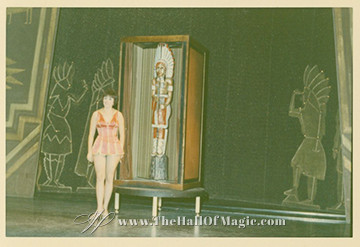
Show Opening, Photo by Irving Desfor
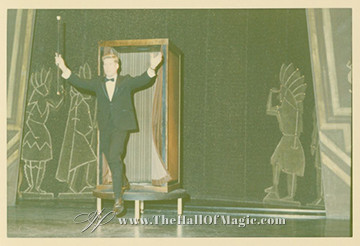
Show Opening, Photo by Irving Desfor
Only one illusion blatantly advertised cigars, but it was done in an entertaining manner. The headline of the newspaper just used to vanish the magician’s cane read, “White Owl introduces new vending machine.” The new machine operated on a principle discovered in Las Vegas, “How to get something for nothing.” After showing the machine empty, it was explained that you didn't need money to make a purchase from it. All you needed to do was think beautiful thoughts. Thoughts like “cigars, cigarettes, Tiparillos. . . ” would cause the “empty” machine to dispense the product. Four different types of cigars were touted in this fashion, including the White Owl New Yorker, a new shape introduced at the fair. Finally, Mark Wilson’s voice proclaimed that, “When it comes to clinching a real sale, nothing will ever beat the old reliable model.” The machine opened up and out popped a young lady.
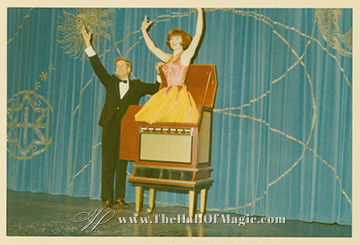
Vending Machine, Photo by Irving Desfor
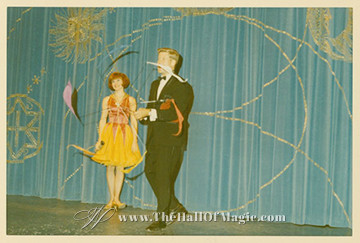
Mutilated Parasol, Photo by Irving Desfor
The show continued with the “Mutilated Parasol” in one. At its conclusion, Mark’s voice announced, “Down through the ages, magicians have trespassed into dangerous areas, and called upon forces which they only half understood . . . ” This introduced a “Thin Model Sawing,” which in 1964 had been seen by very few. It fascinated me. This particular model was designed by Francis Martineau, who was working for Magical Productions at the time. As a builder myself, I think of this model as the one which has no right angles in its construction —it beveled in every direction. Although the design of the “Thin Model Sawing” has improved, this was at the leading edge for its time. It was a fooler. No saw was used, rather two blades divided the girl.
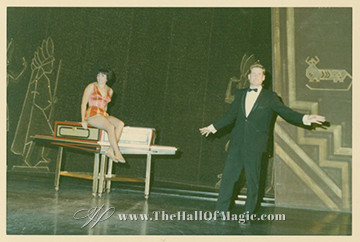
Sawing Start, Photo by Irving Desfor
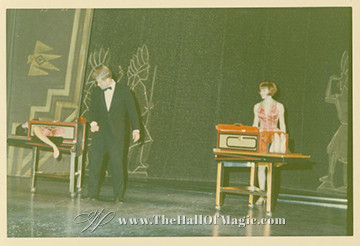
Sawing Divided, Photo by Irving Desfor
Another mild but very entertaining commercial followed. No talk of cigars, just the clever use of a General Cigar trademark — an owl. The trick was announced as “How to change an owl.” A wooden plaque with a green owl was covered and changed to red in the manner of the “Hippity Hop Rabbits.” The patter was delivered in rhyme and, in the end, the audience was sure they knew how the trick worked. They clamored for the magician to turn the plaque around. As the magician obliged, Wilson announced, “Well, perhaps you’re right, but it’s in my current contract that all owls must be . . . white.”
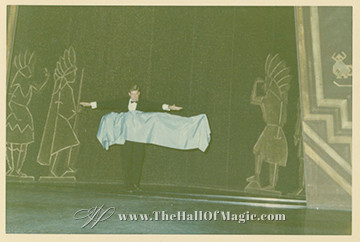
Asrah Levitation, Photo by Irving Desfor
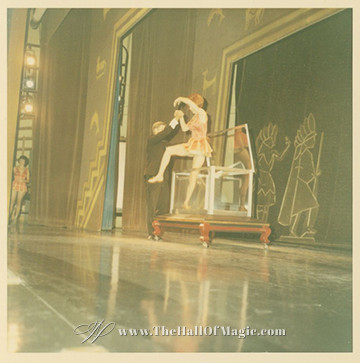
Crystal Box, Photo Irving Desfor
The “Asrah” illusion was presented with an interesting introduction, explaining what was unique about the Hall of Magic at the fair. Although the World’s Fair that surrounded them presented many answers, at the Hall of Magic they were presenting questions. “See if you can penetrate the mystery.” An “Asrah” was some thing I had only read about in catalogs. To see it live was sensational. The vanished girl was immediately reproduced in a “Crystal Box.”
Next, the magician demonstrated a rising cigar, a trick that was explained in the postcard fold-out given away in the showroom. Anybody could perform the trick. All you needed to do was to buy a pack of cigars and cut a slot in the back of the box. With your finger it was easy to make the cigar rise from the pack. Of course, you could only do this after purchasing a pack of cigars. The postcard fold-out explained other effects, some were standards which cleverly substituted cigars for toothpicks or pencils.
Finally, one thought was left with the audience, “Try a White Owl New Yorker.” As this line was spoken, the magician’s cane reappeared and the words “White Owl” and “New Yorker” magically appeared on two black banners held by the pretty young assistants.
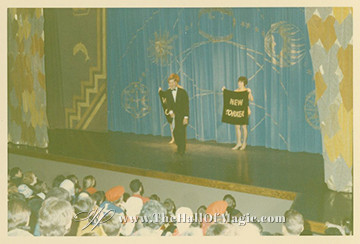
The Banners at the end of the show, still in our collection! Photo by Irving Desfor
You left the theater entertained and trying to figure out just what you saw. It was a perfect combination of magic and commercial. Mark Wilson apparently realized that too much commercial is worse than not enough.
From introduction to exit, the show lasted 13 minutes and 16 seconds. For me, it was the first time I’d seen illusions performed live. I was absolutely exhilarated. I had heard it said at the time that the show was completely computerized, but this was not the case.
The “Asrah” was controlled by a stage hand. Throughout the week, the show ran 24 times a day, while on weekends, it ran 30 times per day.
During the two seasons, over 7,000 shows were presented to more than 2.5 million mystified fairgoers.
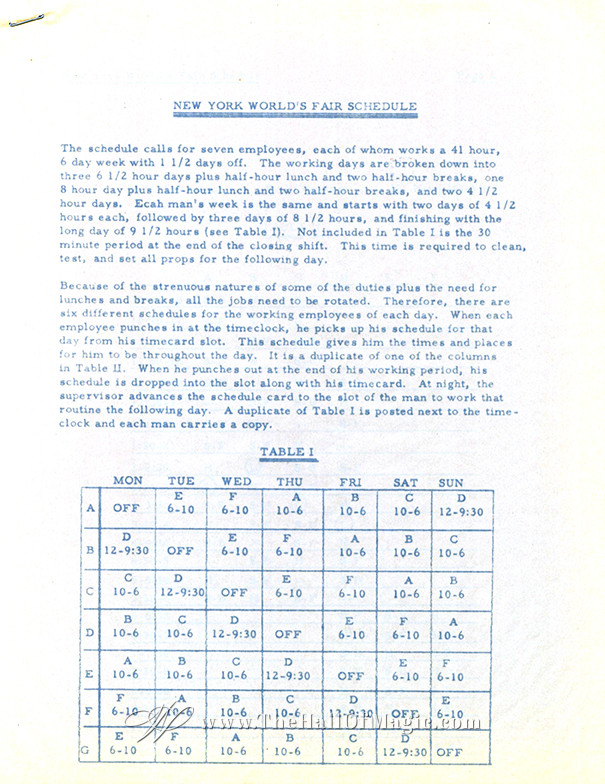
Artists Schedule pg1
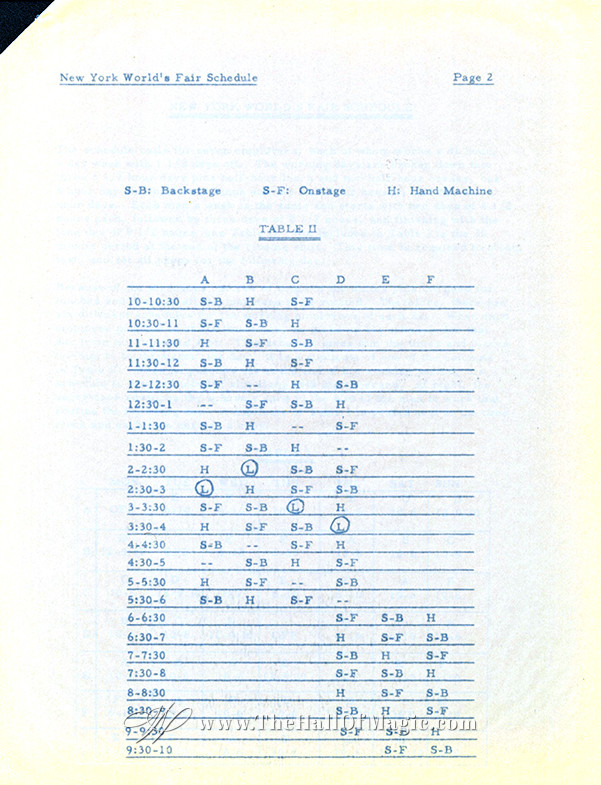
Artists Schedule pg2
Most of the performers employed to be the magician were actors. Although the hiring of the performers was Mark Wilson’s responsibility, he recalls that one of the characteristics important to the client was that the performer have the image of a cigar smoker. Not the Lou Costello type, but rather the Clark Gable image. The show had two female assistants in addition to the magician on stage. During the first year four magicians and six assistants were hired. In addition, there was a master carpenter who served as stage manager, one stage hand and a wardrobe mistress. Two professional magicians were among the performers the first year — Coe Norton and James Randi. Coe Norton’s wife, Laura Lee, was one of the on stage assistants, and recalls how hard the entire crew worked to put on the very best show they could.

Proof Sheet from Mark Wilson's photo shoot with Irving Desfor
Part of the genius of the Hall of Magic show was the recorded dialog and music. The dialog was written by Gordon Auchincloss, with the music composed by Frankie Ortega. The voice was Mark Wilson’s. While the tape ensured the timing of the show and several of its gags, there were pauses where performers had to fill in, sometimes with a question to the audience. These pauses gave each performer a chance to interject their own personality. One might offer a serious demeanor, as did Coe Norton, while another, James Randi, would add a little humor. Exactly the same tricks, but a different presentation. Both were good, but each was unique. Laura Lee also noted that each of the assistants reacted differently to the magic adding to the different looks of the show.
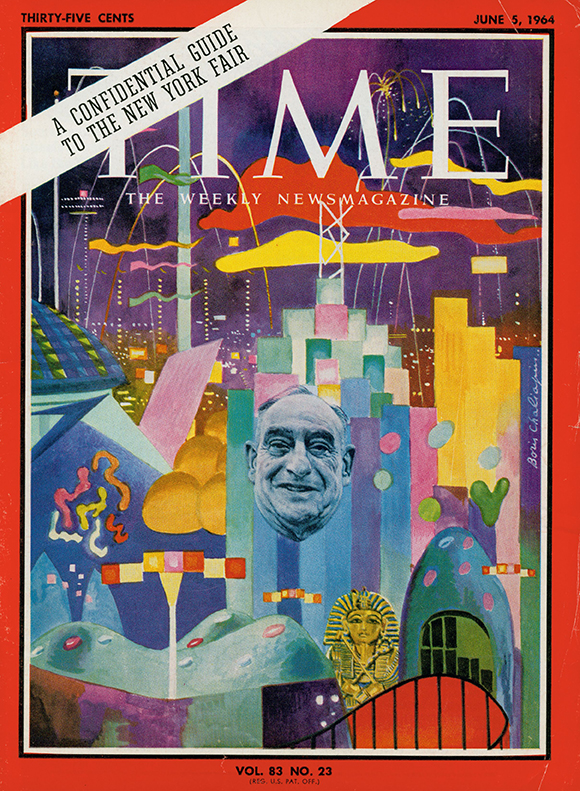
No doubt about it, the show was a smashing success for General Cigar. Of the 49 exhibits in the industrial area of the fair, Time magazine chose ten as the best of the fair. Among these were General Electric, which featured Disney’s Carousel of Progress, IBM and its People Wall, Eastman Kodak, Coca-Cola and Johnson’s Wax.
Also in this prestigious group was a company with a more modest exhibit, General Cigar and its Hall of Magic. In a review of the fair, Time states that “General Cigar presents a brief but first-rate magic show. ”
There's a lot more story...
Click on "Next" below to find out what happens!































